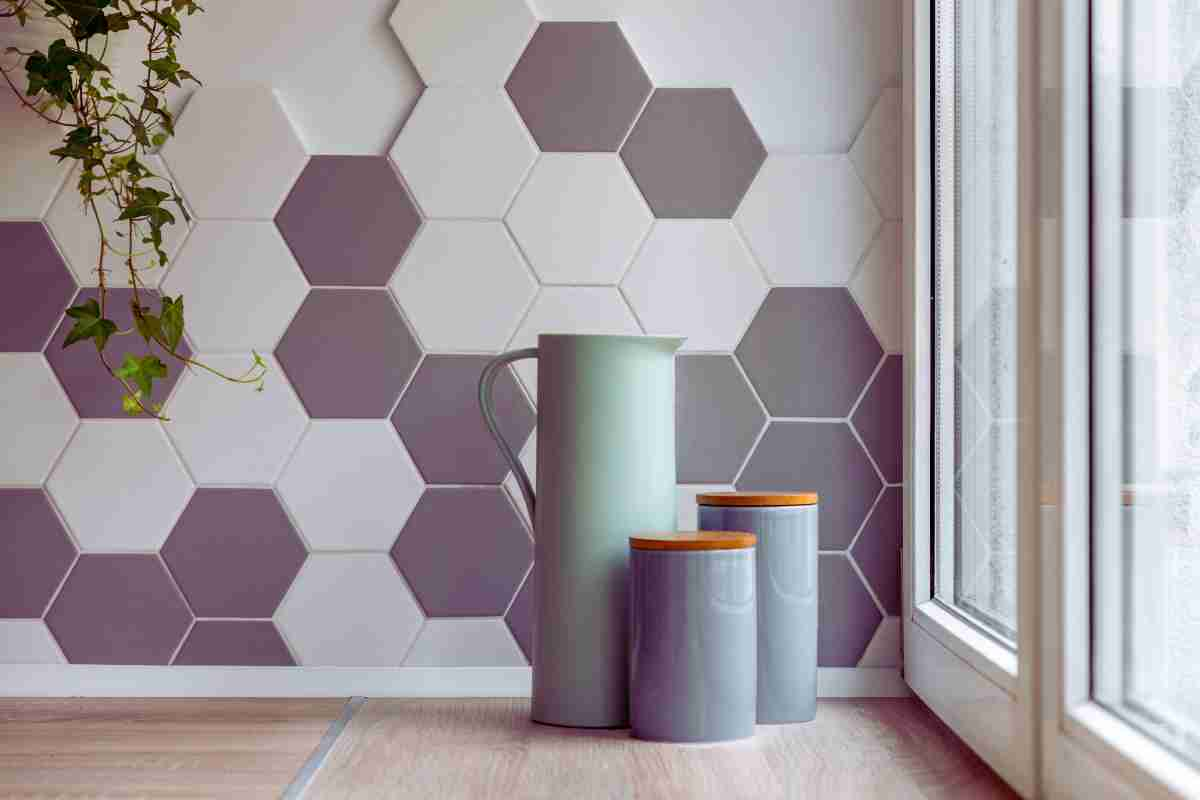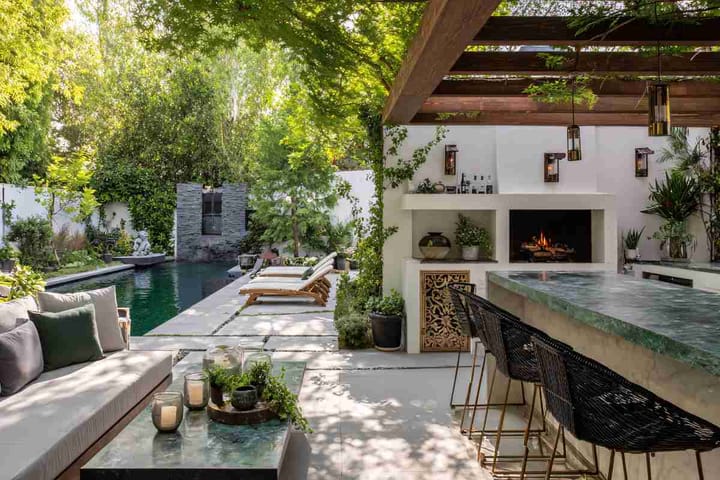Modern Front Wall Tiles Design
Modern front wall tiles enhance curb appeal with diverse shapes, colors, and textures. Durable, stylish designs add value and reflect personal style.

Modern front wall tile designs are transforming the way homes express personality and style. With a plethora of shapes, colors, and textures, these tiles can dramatically enhance a home’s curb appeal. Choosing the right tile design is crucial as it not only adds aesthetic value but also increases the property’s marketability.
Contemporary designs range from sleek minimalistic styles to vibrant geometric patterns, catering to diverse tastes. The availability of durable and weather-resistant materials ensures that the tiles maintain their appearance and functionality over time. Homeowners and designers alike appreciate how these features combine to create stunning exteriors.
Essentials of Modern Front Wall Tile Design
Modern front wall tile design emphasizes clean lines, varied textures, and thoughtful color palettes. This approach often combines innovative materials with traditional techniques, creating harmonious aesthetic experiences.
Defining Modern Aesthetics
Modern aesthetics in wall tiles celebrate minimalism and functionality. The focus is on sleek designs and patterns that provide sophistication. Straight lines and geometric shapes are popular for creating a contemporary look. Some designs may incorporate abstract patterns to add visual interest without overwhelming the viewer.
Forms are often linear or angular. Simplicity remains key, with an emphasis on efficiency and purpose in the design elements. Tile arrangements should be versatile, compatible with both residential and commercial spaces.
Materials and Textures
Material choice significantly impacts the appearance and durability of front wall tiles. Porcelain and ceramic tiles are common, offering durability and ease of maintenance. Natural stones like marble or granite add luxury but can require more upkeep.
Innovative materials like glass and metal introduce shine and texture, while 3D tiles provide depth and interest. Textured finishes, such as matte or gloss, contribute to the tactile experience. The interplay of smooth and rough surfaces is a staple in modern designs. An interior design firm might also suggest eco-friendly materials.
Color Schemes
Color schemes in modern tile design often rely on neutral tones with selective accent colors. Shades like white, gray, and beige create a versatile backdrop that allows other design elements to shine. When pops of color are used, they tend to be deep blues, rich greens, or warm terracottas.
The role of color can transform a space, setting a mood or enhancing natural light. Some interior design firms recommend monochromatic schemes for understated elegance, or bold contrasts for dynamic spaces. Patterns in complementary colors can be utilized to highlight architectural features.
Strategies for Selecting the Right Tiles
Choosing the right tiles involves assessing the space, considering durability and maintenance, and ensuring alignment with the overall design theme. Thoughtful evaluation of these factors can lead to a successful tile selection that enhances aesthetic appeal and functionality.
Assessing Space and Lighting
Evaluating the room’s dimensions and lighting can dramatically influence tile choice. For small rooms, light-colored tiles can create an illusion of space, while large tiles with fewer grout lines help maintain a clean look. In spaces with limited natural light, glossy tiles can help reflect light, adding brightness. Taking note of the height and width of the walls allows designers, such as Interior Designer Denver, to select tiles that complement these dimensions effectively and maintain harmony in the design.
Durability and Maintenance Considerations
The intended use of the space significantly dictates the durability requirements of the tiles. High-traffic areas like hallways need robust tiles such as porcelain or stone, which resist wear and tear. In contrast, ceramic tiles may suffice for lower-traffic areas or decorative walls. Maintenance is also vital; some tiles, like natural stone, require sealing to protect against stains and damage.
Integrating Tiles with Overall Design Theme
Tiles should seamlessly blend with the room’s design aesthetic. For modern interiors, sleek tiles with minimalistic patterns or neutral palettes can enhance the contemporary theme. Bold colors or intriguing patterns might suit eclectic styles or to create feature walls. Seeking inspiration or advice from experts ensures that the selected tiles resonate with the desired atmosphere. Interior Designer Denver may recommend specific textures or finishes that echo the design vision, ensuring cohesion throughout the space.
Installation Techniques and Best Practices
Effective installation of modern front wall tiles involves careful preparation of the surface and precise laying techniques. Each step is crucial to achieving a high-quality and durable finish that aligns with the vision of any interior design firm.
Preparing the Surface
Proper surface preparation is the first step. Clean the wall thoroughly to remove dirt, grease, or old paint that can prevent tiles from adhering. Use a mild detergent or cleaning solution, and allow the surface to dry completely.
Check for uneven areas and fill them with a leveling compound. Ensure the wall is flat and smooth to avoid tile misalignment. Mark reference lines using a level to maintain precise alignment throughout the project.
For surfaces exposed to moisture, apply a waterproof membrane. This provides protection against water damage, ensuring long-lasting stability. Preparing the surface ensures that tiles adhere correctly and enhances the overall durability and appearance of the wall.
Laying Techniques for a Flawless Finish
Begin by applying tile adhesive using a notched trowel. Maintain uniform coverage to prevent tiles from becoming loose. Work in small sections to prevent the adhesive from drying prematurely.
Place the tiles along the guideline, applying firm pressure. Use spacers between tiles to ensure even spacing and alignment. Periodically step back and check the overall alignment and any necessary adjustments.
Once tiles are set, apply grout using a rubber float, pressing it firmly into the joints. Remove excess grout with a damp sponge, ensuring clean lines. Allow time for the grout to cure before cleaning the tiles completely.
In the installation of modern front wall tiles, these techniques guarantee a precise and enduring outcome that reflects the expertise of any reputable interior design firm.
Notable Tile Trends and Innovations
Modern tile design continues to evolve with a focus on environmental sustainability, technological advancements, and unique aesthetics. These developments are important for interior designers in Denver and beyond who seek to create striking and eco-conscious spaces.
Eco-Friendly and Sustainable Options
The demand for sustainable materials has led to significant innovations in tile manufacturing. Tiles made from recycled materials such as glass and ceramics reduce environmental impact. Low-VOC (Volatile Organic Compounds) sealants reduce air pollution. Manufacturers prioritize resource-efficient processes to minimize waste.
Consumers are increasingly interested in tiles that offer a sustainable alternative without compromising on style or durability.
Advanced Digital Printing Technologies
Digital printing technologies in tile design have transformed the way tiles look. This technology allows for precise and complex patterns that replicate the appearance of natural stone, wood, or even textiles.
Digital printing offers interior designers versatility in choice, enabling them to craft spaces that reflect their client's unique taste with unparalleled accuracy.
3D Textured Tiles and Patterned Designs
3D textures and innovative patterns in tile design offer a tactile and visually engaging element to any space. These tiles can create focal points or add depth to walls, making them popular for feature walls and interiors requiring a modern flair.
Common textures include:
- Waves
- Geometric patterns
Patterned designs draw inspiration from nature, architecture, and contemporary art, providing customizable options for designers looking to achieve impactful aesthetics. The incorporation of these elements in tile design reflects a commitment to both innovation and creativity.




Comments ()